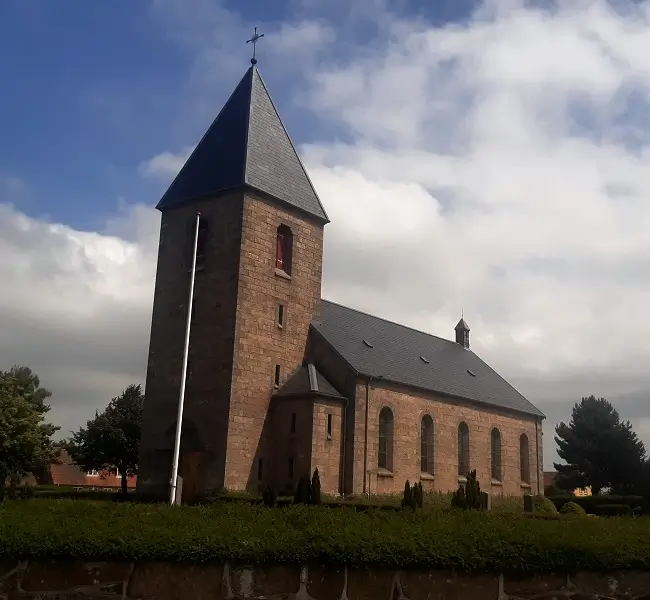
The churches on Bornholm are unique architectural monuments, including the characteristic Romanesque round churches that attract tourists from all over the world. These historical sanctuaries, set amidst Denmark’s picturesque landscapes, are an important part of the island’s cultural and religious heritage.
The round churches on Bornholm are unique architectural landmarks built in the 12th century, serving both religious and defensive purposes. There are four such churches on the island: Østerlars, Olsker, Nylars, and Nyker. They are distinguished by their thick stone walls and characteristic cylindrical shape. The largest and most famous among them—Østerlars—impresses visitors with its frescoes and remarkable construction featuring a central pillar.
Their construction is linked to the early Christian period on Bornholm, and their strategic locations suggest they may have also served as shelters during invasions. Today, these churches are among the island’s top tourist attractions, drawing history and architecture enthusiasts from around the world.
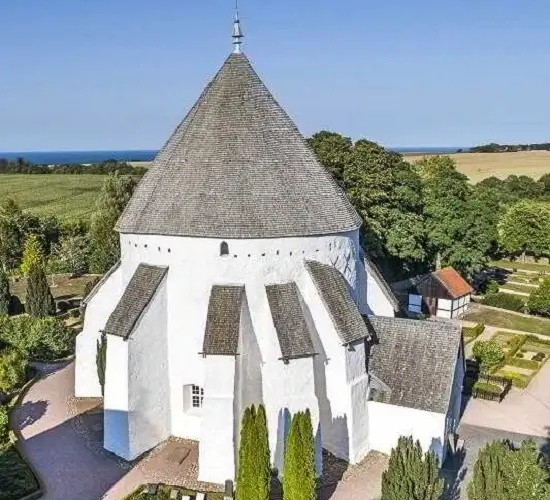
The Østerlars Round Church on Bornholm is the largest and most famous church of its kind in Denmark, attracting tourists with its unique architecture and rich history. Built in the 12th century, the church served both religious and defensive purposes, with its thick stone walls and central pillar with a gallery giving it a distinctive appearance.
The interior is adorned with well-preserved Romanesque frescoes depicting biblical scenes, making it a significant site for history and art enthusiasts. Østerlars Church is one of Bornholm’s most important attractions, drawing visitors interested in medieval architecture and Denmark’s cultural heritage.
The Nyker Round Church is the smallest of the four Romanesque defensive churches on Bornholm, distinguished by its unique architecture and well-preserved frescoes. Built in the 12th century, it is a valuable example of Denmark’s medieval heritage, combining religious and defensive functions.
The church’s interior is adorned with paintings depicting biblical scenes, attracting history and art enthusiasts. With its charm and unique character, Nyker Church is one of Bornholm’s most intriguing tourist attractions, making it a perfect destination for those exploring the mysteries of medieval architecture.
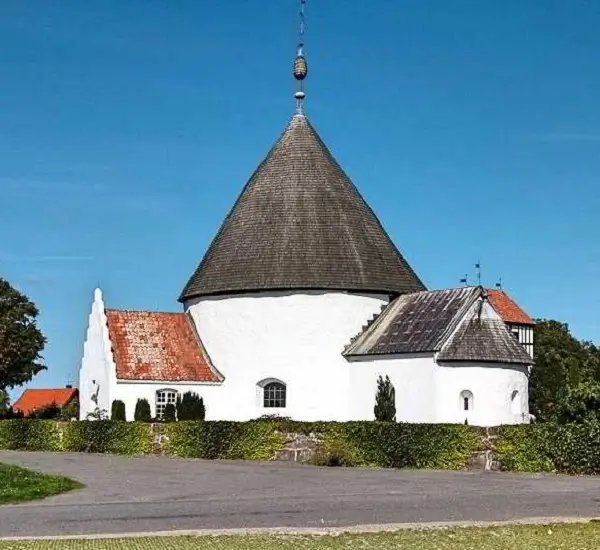
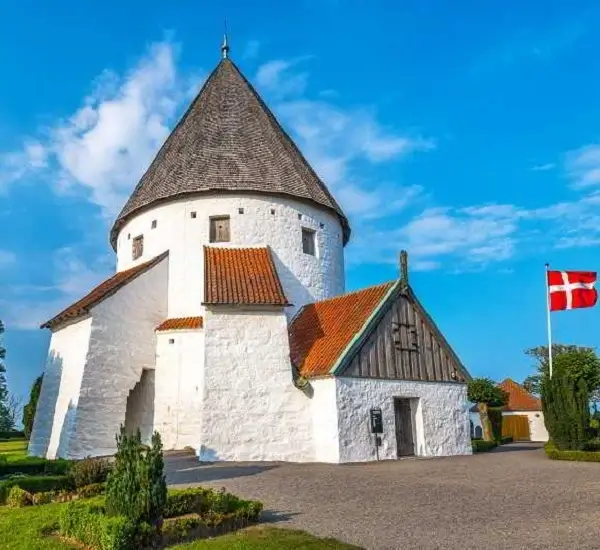
The Nylars Round Church is one of the best-preserved medieval defensive churches on Bornholm, distinguished by its solid stone construction and unique 12th-century frescoes. Its massive walls reflect its original defensive function, while the interior houses some of the oldest and best-preserved paintings depicting biblical scenes.
This church is one of the most significant monuments of Denmark’s cultural heritage, attracting tourists and architecture enthusiasts from around the world. Nylars Church is a must-visit landmark on Bornholm, perfect for those eager to explore the island’s history and unique architecture.
The Olsker Round Church is the tallest of the four Romanesque defensive churches on Bornholm, distinguished by its slender silhouette and solid stone construction. Built in the 12th century, it served both religious and defensive purposes, providing shelter from invasions.
Its interior is adorned with well-preserved frescoes and unique architectural elements that attract history and art enthusiasts. With its exceptional location and impressive height, Olsker Church is one of Bornholm’s most distinctive landmarks, making it a perfect destination for tourists exploring Denmark’s cultural heritage.
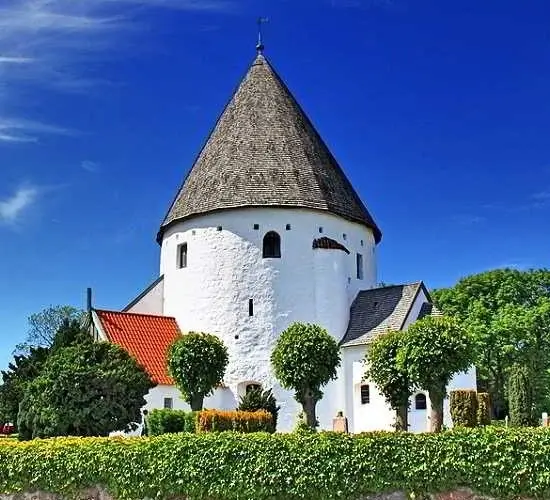
In addition to the famous round churches, Bornholm offers many other historic sanctuaries that serve as important testimonies to Danish history and architecture. Among them is the Gothic St. Nicholas Church in Rønne, the largest church on the island, distinguished by its characteristic tower and beautiful interior. St. Bodil’s Church impresses with its simplicity and Romanesque style, while Aakirkeby Church is one of Bornholm’s oldest buildings, known for its impressive medieval details.
Each of these churches holds remarkable stories and architectural treasures, attracting culture enthusiasts and tourists seeking authentic and historic sites on Bornholm.
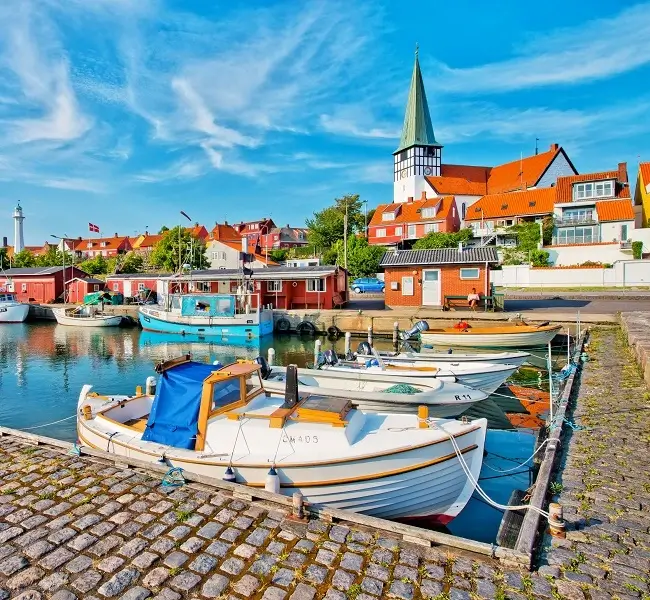
St. Nicholas Church in Rønne is one of the most famous churches on Bornholm, alongside the island’s four distinctive round churches. Situated slightly above the port, it is easily visible from a distance and serves as an important landmark in the city.
The church's history dates back to 1275, when a small chapel was first built on this site. Over the centuries, the sanctuary has been repeatedly rebuilt and expanded, yet it has always remained the main church of Rønne. One of its most striking features is the floor made of local Bornholm granite, which gives the interior a raw yet elegant character.
Today, St. Nicholas Church attracts not only tourists but also music lovers, especially in August, when international organ concerts are held within its historic walls.
Aakirkeby Church is one of Bornholm’s most distinctive landmarks, standing out with its towering twin spires, which serve as the central focal point of the town. The church’s name originates from the two streams surrounding the site, and the building itself was constructed around 1150 on a massive granite foundation. Its structure is made of gray Silurian limestone and green sandstone, giving it a unique and striking appearance.
Its inland location was strategically chosen, as the church stood at the crossroads of Bornholm’s main trade routes and served as the island’s primary church. Over the centuries, its walls hosted important political and religious meetings, and until the 18th century, it was the site of an annual church conference.
The bright interior of the church impresses with its simplicity and elegance, while the Renaissance altar and pulpit add a touch of historical charm.
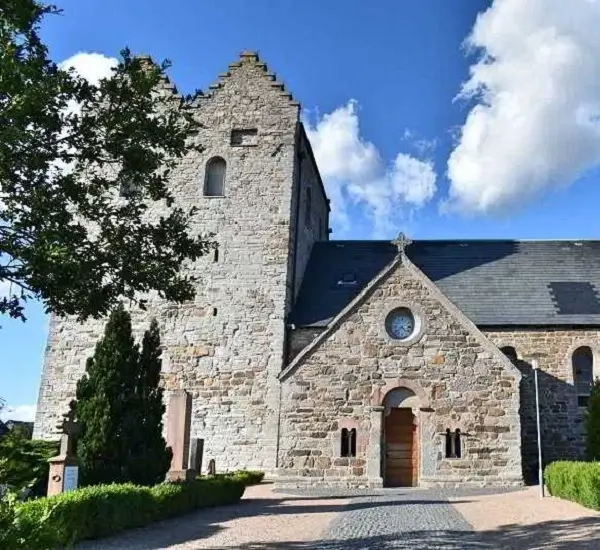
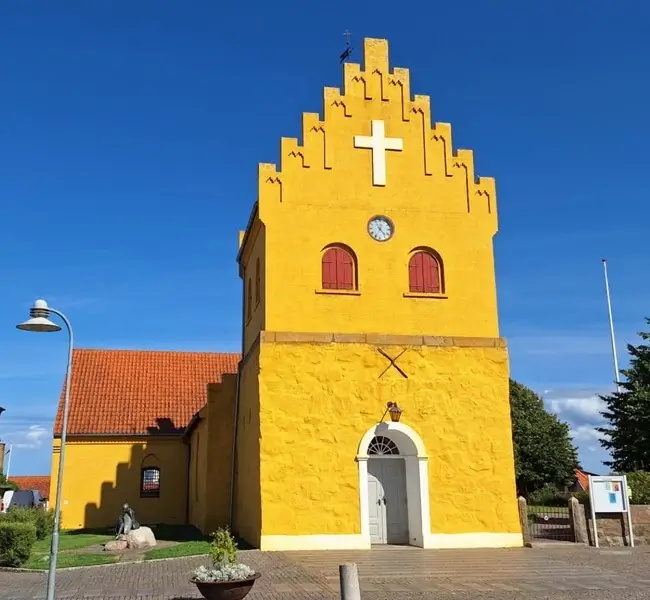
Allinge Church is a distinctive yellow-painted sanctuary dating back to the 16th century, with origins around 1500. Initially a small chapel, it was later expanded and transformed into a fully developed church. The building underwent two significant renovations – in 1896 and 1992, shaping its present appearance.
Allinge Church has a rich history and has hosted visits from Danish monarchs, including Frederick V in 1687 and Christian V in 1750, commemorated by plaques on the back wall of the church. Inside, unique plague memorial plaques from 1618 and 1654 bear the names of past epidemic victims. A particular highlight is the unique altar and the Renaissance pulpit from around 1650. The Busch organ, crafted in 1894, adds a distinctive character to the church.
The church also holds valuable historical relics from Hammershus Castle, including tombstones of former commanders, chandeliers, and altar elements, making it a site of deep historical significance.
Bodils Church in Bodilsker is a Romanesque church dedicated to St. Bothulf, located directly along the road from Nexø to Rønne, just a few kilometers from Nexø. One of its most distinctive features is the freestanding bell tower and the striking contrast between the white walls and red-brown beams, giving it a unique and characteristic appearance.
The church combines elements from different periods – its northern section was added in 1911, while the pulpit dates back to the 16th century. Inside, there are two exceptional baptismal fonts: one made of granite and the other of Gotland limestone, reflecting the rich history and cultural influences of the region.
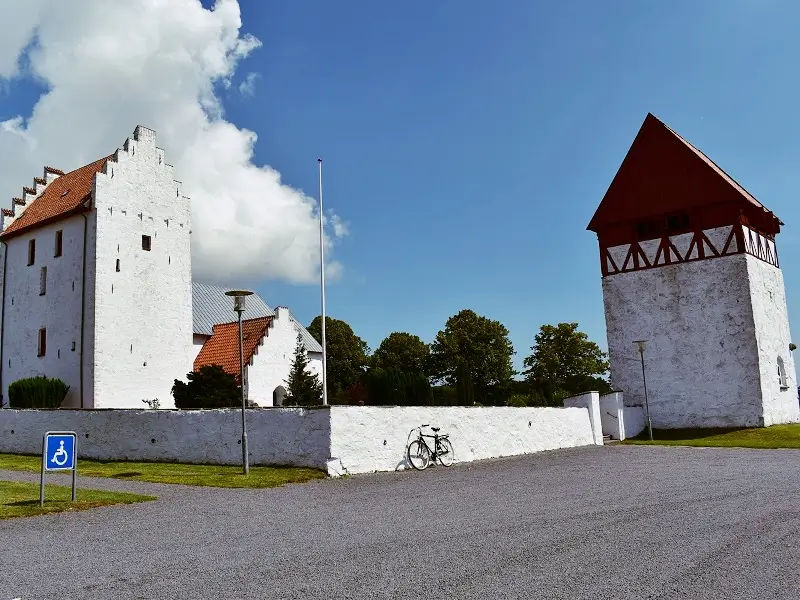
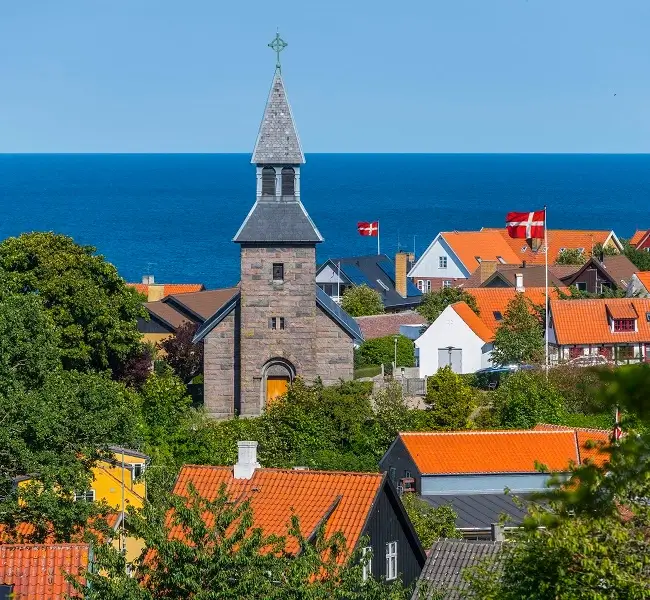
The church in Gudhjem is a relatively young sanctuary, built in 1893 in the Neo-Romanesque style. The granite structure consists of a massive square tower and a nave with a polygonal apse, while its slate-covered walls give it a raw yet elegant appearance. The church was constructed near the ruins of the 13th-century St. Anne’s Chapel, continuing the long-standing religious tradition of the site. Inside, visitors can admire a valuable Late Gothic altar from around 1475, while the altar panel and pulpit, originally from St. Anne’s Chapel, add a deep historical character to the church.
The ruins of St. Anne’s Chapel are the remains of a medieval structure built from hewn fieldstones and brick. Today, the roofless foundations and a partially visible altar serve as a precious historical testimony to Bornholm’s past.
Hasle Church is a picturesquely located sanctuary towering over the port, with a history dating back to the 15th century. Originally built as a chapel around 1460, it gradually became an important place of worship on Bornholm. The distinctive red building stands out against the town’s landscape, attracting both locals and tourists.
One of the most valuable interior elements is the Late Gothic altar from the early 16th century (around 1510), intricately carved and rich in historical details. Unfortunately, only three original panels have survived to this day, yet they remain a remarkable example of medieval religious art. The pulpit, dating back to 1600, further enhances the unique character of the church’s interior.
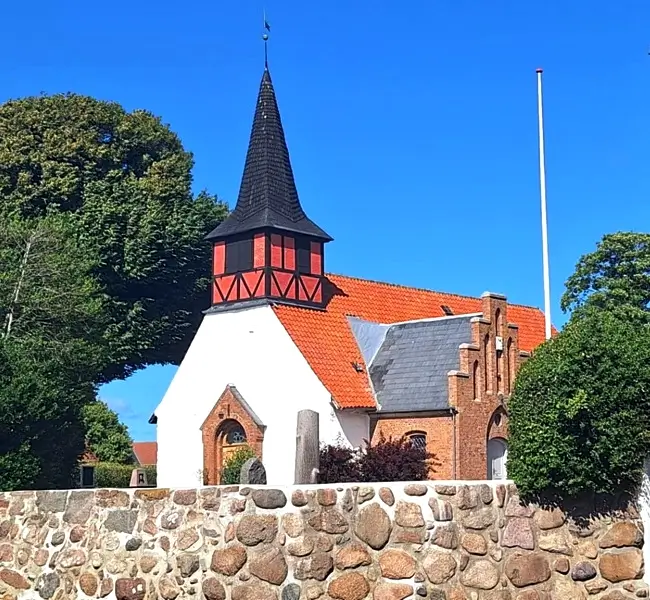
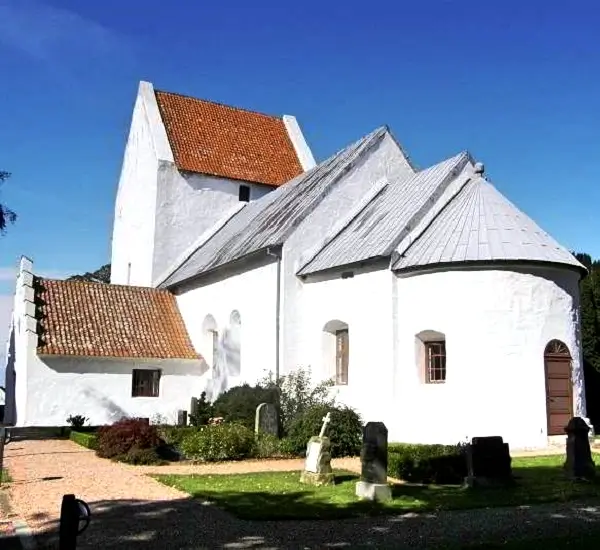
St. James Church is a whitewashed historic sanctuary near Svaneke, with its tower visible from afar. The church's oldest parts, including the Romanesque west tower, apse, and choir, date back to the 11th century, making it one of the oldest churches on Bornholm. In the 14th century, a chapel was added, and in 1867, a major renovation introduced a large transept while demolishing the north wall. In 1964, the church was further enriched with a new organ.
Inside, the church features the valuable altarpiece "Christ in the Garden of Gethsemane" from 1846, along with preserved sacred elements such as a statue of Mary, a crucifix, a baptismal font, and two antique candlesticks from 1891 and 1933. The oldest artifact in the church is the baptismal font from Gotland. The chapel houses a plaque with the names of past pastors and historical portraits, while the church grounds contain various tombstones.
The bell tower holds two bells, one from 1773 and another from 1822. On the church’s outer walls and cemetery, iron rings—once used by worshippers to tie their horses—are still preserved, offering a glimpse into the past traditions of the congregation.
Klemensker Church is a Neo-Romanesque sanctuary built in 1882 on the site of a former medieval church, which has not survived to the present day. The new structure, made of massive granite blocks, reflects the characteristic architectural style of Bornholm. Most of its interior furnishings date back to the time of its construction, giving the church a cohesive and historic character.
In 1960, the church underwent a major renovation, preserving its original style while incorporating new elements. Today, it remains an important place for the local community and an intriguing landmark for tourists exploring Bornholm’s historical sites.
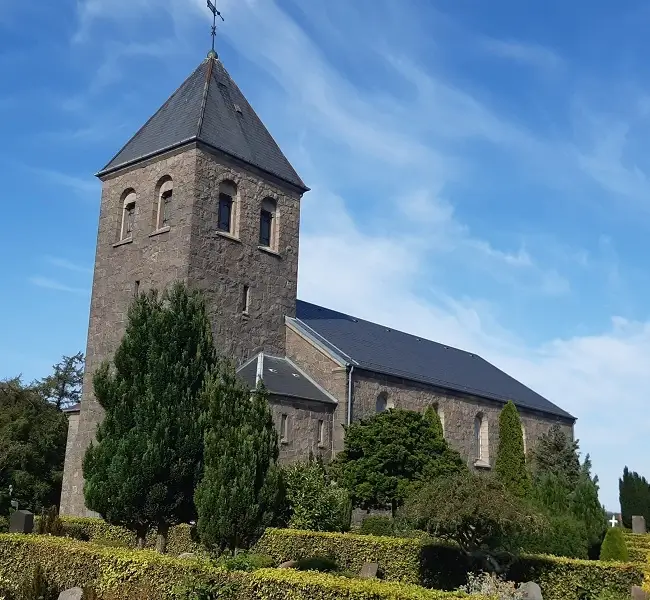
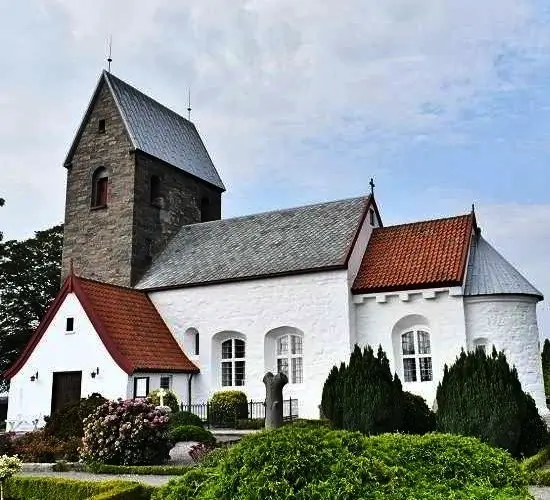
Knudsker Church, located just a few kilometers east of Rønne, is a Romanesque sanctuary built around 1150. Its architecture is distinguished by a characteristic tower, multiple naves, and a semicircular apse, giving it a classic medieval appearance. It is one of the smallest churches on Bornholm, as noted in various historical sources.
Inside, the church houses a valuable altar and pulpit, both dating back to 1600. These were repainted in 1760, giving them a renewed appearance. Despite its modest size, Knudsker Church boasts a rich history and remains an important part of the island’s sacred heritage.
Nexø Church is an impressive Late Gothic sanctuary dedicated to St. Nicholas, the patron saint of sailors, much like St. Nicholas Church in Rønne. Located in the coastal port town on the eastern shore of Bornholm, it stands out with its white façade and a distinctive half-timbered Renaissance tower, giving it a unique presence in the town's landscape.
Between 1985 and 1995, the church underwent a comprehensive renovation, restoring its former splendor and emphasizing its historical details.
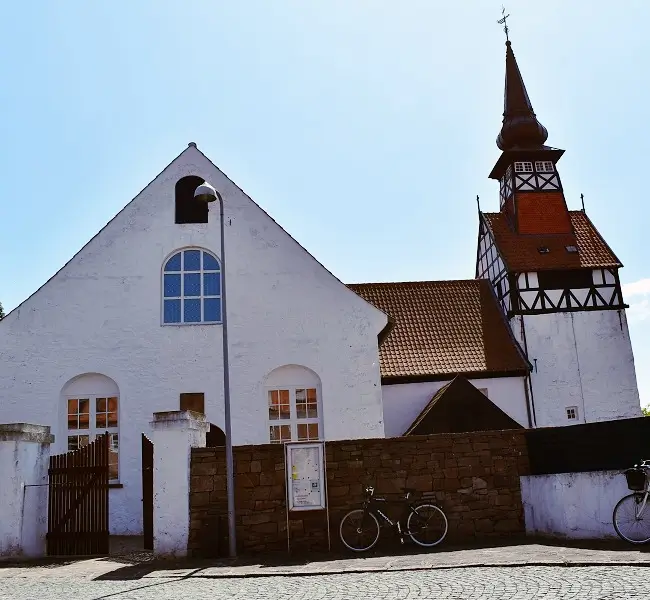
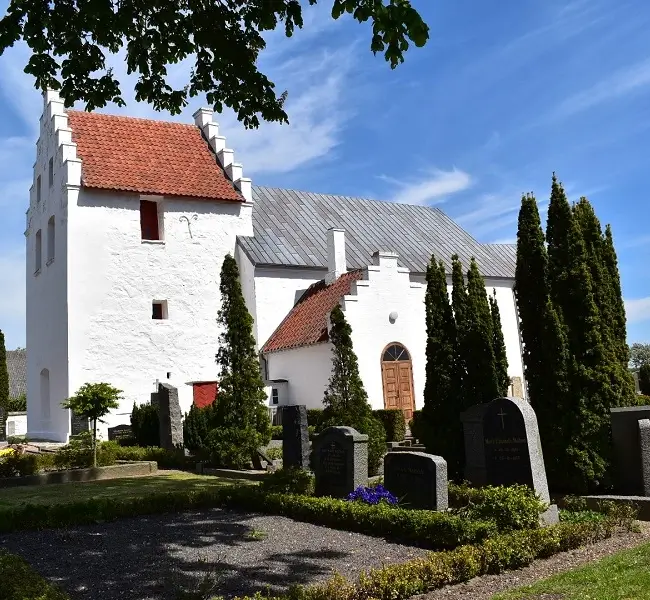
Pedersker Church, also known as Pederskirke, is a Romanesque sanctuary located in southern Bornholm, along Søndre Landevej, between Snogebæk and Rønne. The church and its cemetery, enclosed by a white wall, form a distinctive landmark in this small town, whose parish includes many scattered farms.
Built around 1150, Pederskirke is considered by some sources and local residents to be the oldest church on the island. Its Romanesque architecture and historical details make it a unique cultural monument on Bornholm. One of the most interesting interior features is an old chandelier and a ceiling painting depicting the church’s patron, St. Peter.
Østermarie, a small town in eastern Bornholm, is home to two unique churches that together form an extraordinary cultural heritage of the region. The new church, built in 1891 in Neo-Romanesque style, replaced an older sanctuary. Inside, visitors can admire a baptismal font linked to the famous Bornholmer Jens Kofoed, as well as an interesting altar with a triumphal cross. The southern side chapel features a Madonna from 1500, while the altar itself originates from Bethania Church in Aakirkeby.
Right next to it stand the ruins of Gamle Kirke, an old church built around 1200 from massive granite blocks. On the former cemetery grounds, the imposing outer walls still remain, a testament to the solid medieval construction of the original church. Gamle Kirke was particularly notable for its innovative double vault, supported by two pillars, and its advanced roofing design, which was considered modern for its time.
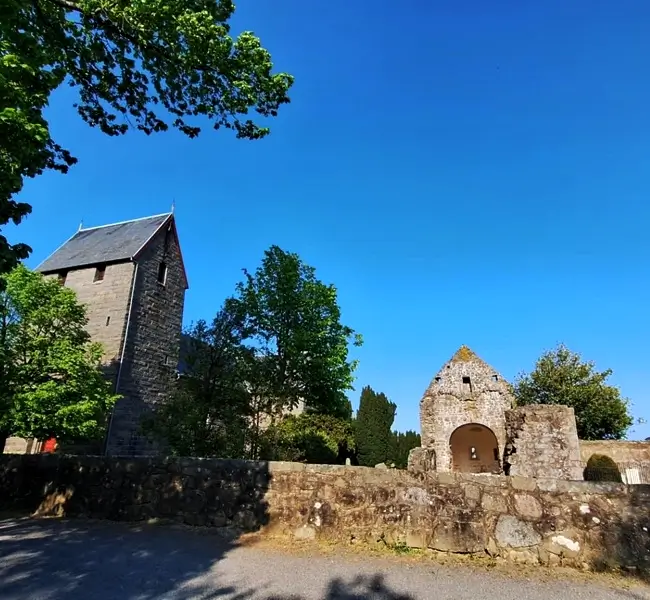
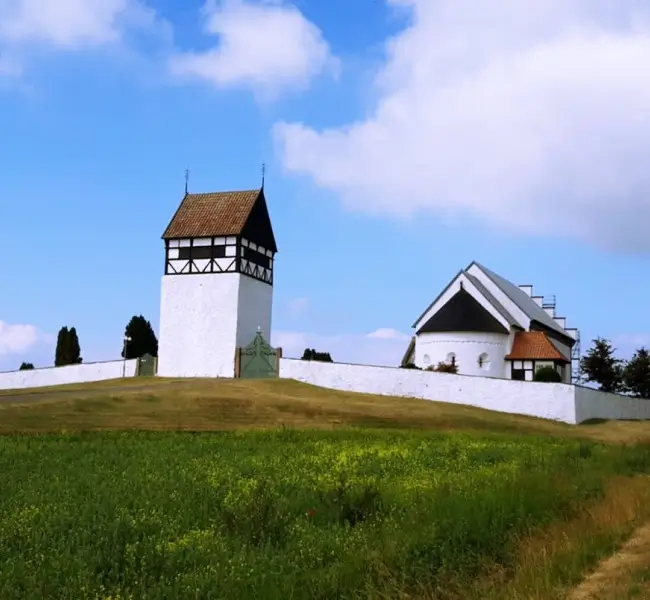
Poulsker Church is one of Bornholm’s most fascinating sanctuaries, notable for lacking its own tower—instead, the bell tower stands separately, giving the church a unique character. Built around 1250 in Romanesque style, it has preserved many medieval architectural elements.
Inside, visitors can admire historic frescoes dating back to the church’s construction, serving as valuable testimonies of the past. During the latest renovation, the original altar front was uncovered, restoring part of the church’s authentic medieval appearance.
Rø Church, located on the outskirts of Gudhjem in the small town of Rø, is a Neo-Romanesque sanctuary built in 1888 as a replica of its medieval predecessor, which dates back to around 1200. Although the current structure is relatively young, fragments of the original church can still be found inside, preserved in the armory and the tower hall.
The gray granite church, constructed with large stone blocks, blends harmoniously into the Bornholm landscape. Inside, it houses a valuable altar and pulpit from the early 17th century, adding a rich historical character to the sanctuary.
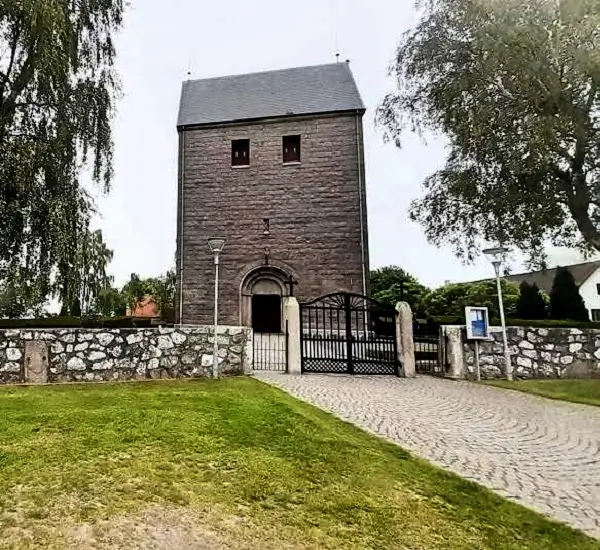
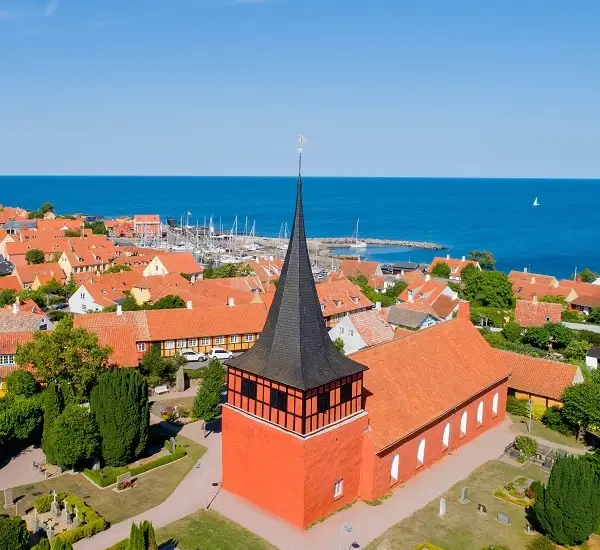
Svaneke Church is a distinctive red sanctuary with a history dating back to the 14th century. Initially built as a chapel around 1350, it gained its impressive half-timbered tower only in 1789, giving it a unique appearance.
Inside, the church houses valuable historical artifacts, including a Baroque pulpit from 1683, which is one of its oldest furnishings. The church’s striking red color was added during its most recent renovation, making it stand out among Bornholm’s other churches.
Rutsker Church, situated at an altitude of 130 meters above sea level, is the highest-located church in all of Denmark. Perched on a hill surrounded by fields, it is visible from afar, serving as a picturesque landmark in the northern Bornholm landscape, east of Hasle.
Built around 1200 in Romanesque style, the church stands out with its distinctive tower, whose dark color contrasts with the whitewashed façade of the sanctuary. Inside, it houses numerous historical artifacts, including a chandelier from the former Hammershus fortress and well-preserved frescoes.
Rutsker Church also holds significant historical importance—its former pastor, Povl Hansen Anker (1630–1697), played a key role in the Bornholmers’ uprising against Swedish occupation in December 1658, which ultimately led to the island’s return to Denmark.
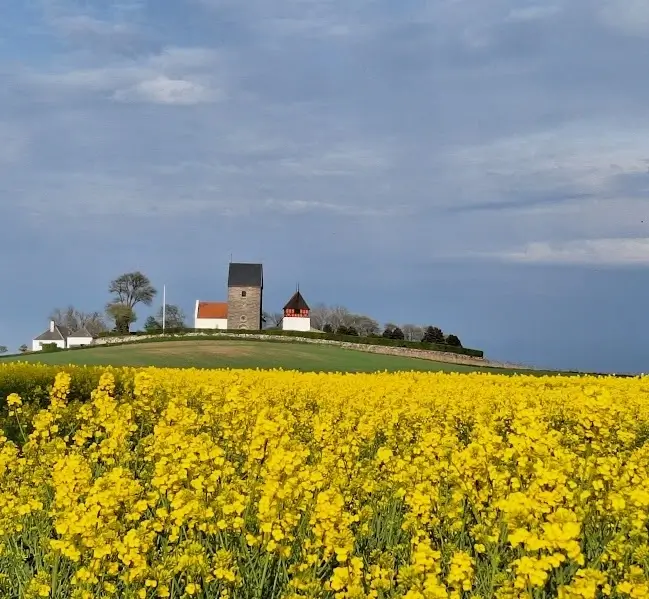
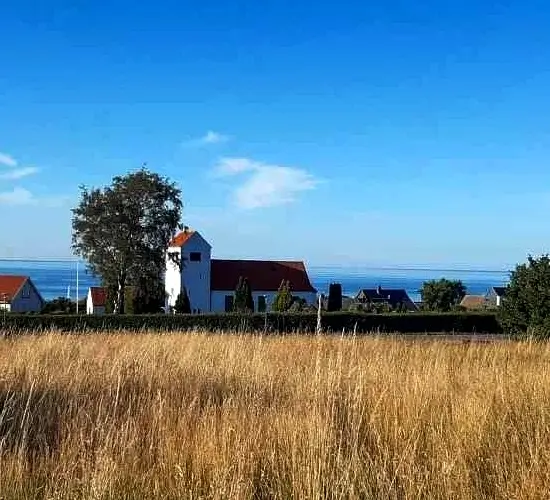
Tejn Church, located in the small fishing village on Bornholm’s eastern coast, between Gudhjem and Allinge, is the newest church on the island. Construction began in 1939 and was completed in 1940, following the design of architect Gravslund.
The church stands out with its simple and functional architecture. Its whitewashed façade gives it a classic yet elegant appearance, while the rectangular nave and bell tower with the main entrance facing west emphasize the minimalist style of the building. Inside, the church houses a remarkable baptismal font, which is one of its most distinctive interior features.
Vestermarie Church, located in the heart of Bornholm, is an impressive sanctuary built in 1885 from reddish granite in the Neo-Romanesque style. It was constructed on the site of the medieval Marienkirche, preserving part of its heritage—the altar and pulpit originate from the old church. The altar, depicting Jesus in the Garden of Gethsemane, gives the interior a sacred and reflective atmosphere.
In 1982, the church was enriched with a clay cross, adding a modern touch to the traditional space. In the church courtyard, visitors can find six runestones from the 11th century, serving as evidence of Bornholm’s early medieval history. Additionally, next to the church stands a chapel from 1825, the oldest building in Vestermarie, which is also worth exploring.
